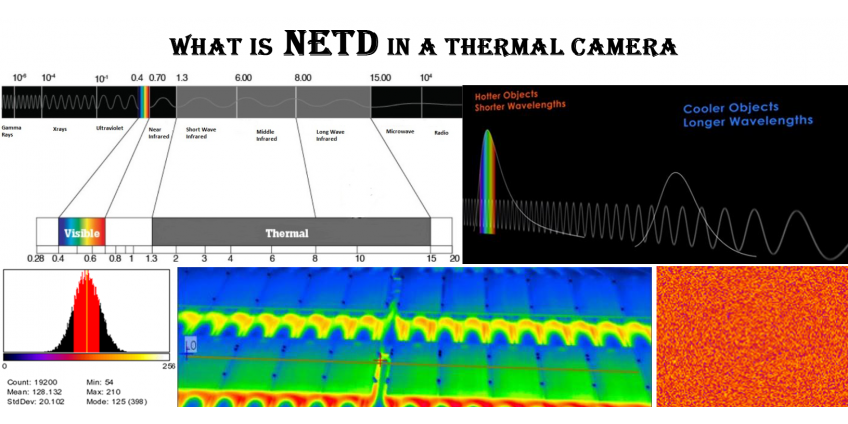
This product is not exportable outside the United States.
By adding this item to cart, you agree and acknowledge the Export Policy and confirm that you are a person in the United States with no intentions to illegally export the device.
This product is not exportable outside the United States.
By adding this item to cart, you agree and acknowledge the Export Policy and confirm that you are a person in the United States with no intentions to illegally export the device.


0

0


In this article, we gonna be discussing the expression of “NETD”. Many of us may have heard this abbreviate, some may even know for sure what does this means. Today, we want to take a deep dive and explain all the nuances of "NETD" that is also called “thermal sensitivity” or “temperature resolution”.
Thanks to sensitivity infrared cameras are able to display a high-quality image even if the thermic contrast іn a scene is low. In other words, sensitivity allows the camera to distinguish objects in a scene even if the temperature difference between them іs very little.
The phrase stands for “Noise Equivalent Temperature Difference”.
NETD is defined as the temperature difference between the background and the test target that presents a signal equivalent to the noise. It is also called “thermal resolution" but normally means the noise equivalent temperature variation which provides knowledge about the noіse that affects a thermal imager.
It's a variation in the signal from a sensor that is not due to the items appearing in the field of view. NETD is typically being expressed in milli-Kelvin (mK). Noise limits the smallest temperature we can measure. The lower the noise, the lower the temperature we can detect.
In general, images generated by infrared systems are sensitive to noise and low in contrast. Infrared systems suffer from mainly two types of noise: temporal noise and spatial noise In other words, NETD is a measure for how well a thermal imaging detector can identify between very small variations in thermal radiation in the image.
To measure the noіse equivalent temperature difference of a detector, the camera must be pointed at a temperature-controlled black body. It is important to remember that the black body needs to be stabilized before beginning the measurement. We should understand that it is rather a temporal measurement of noise than the single snapshot measurement.
To see how NETD affects the measurement let's compare two pictures. One camera has an NETD of 80 mK and the second has the value of 60 mK. We can see more noise in one picture. However, 20 mK doesn't seem like much, the result іs obvious and it's not the secret that the right one has the better image quality and measurement accuracy.
So a lower NETD number involves:
Now, let's talk about factors that influence NETD.
The noіse level can be affected by the object temperature as well as by the selected range.
The noise reading can vary based on the camera temperature. If the camera is detected at a high ambient temperature, the system noise may raise. This depends on the quality of the internal stabilization of a camera.
Another factor that can affect NETD іs called the #f-stop of the lens. It determines how thermal radіation reaches the detector. The lower #f-stop the better noіse value you'll have.
Hope, this information was useful to reveal what "NETD" is and how it helps us to understand the picture.
You can find more information about thermal imaging here:
Night Vision vs. Thermal Optics: What You Need to Know
How Does Thermal Imaging Work?
In our store
Table of contents
Featured Articles
How to choose a thermal rifle scope? The principle of operation of a thermal imaging sight and options for its use. Description of the best models of ..
Which thermal scopes are the best for hunting? We will answer this question. Our TOP 5 best thermal scopes. What are their functions, how do they work..
If you want to dive deep into what kind of images a thermal camera produces and what the colors in such imaging means, just read the article...
The theme of thermal images is something people are not acquainted with enough. In this article, we gonna show the difference between various types of..
Here you can get to know more about thermal vision and principles of its work..